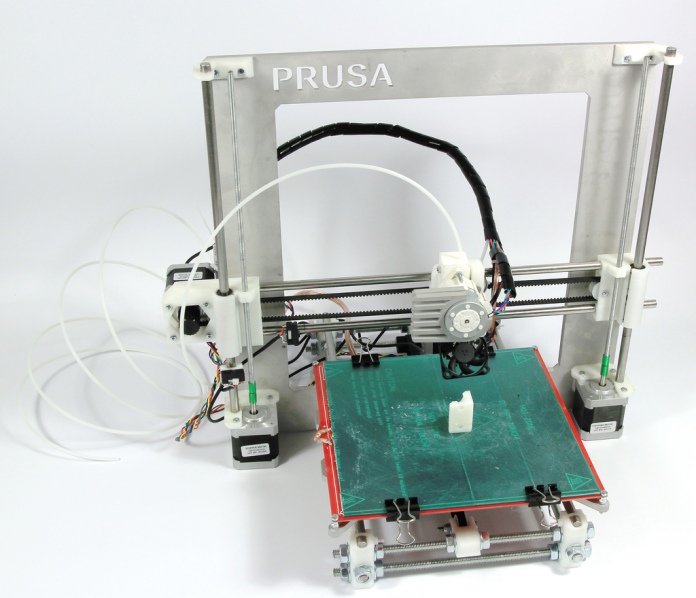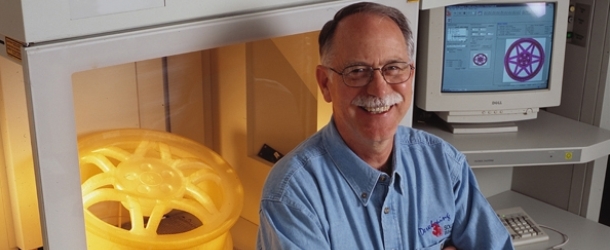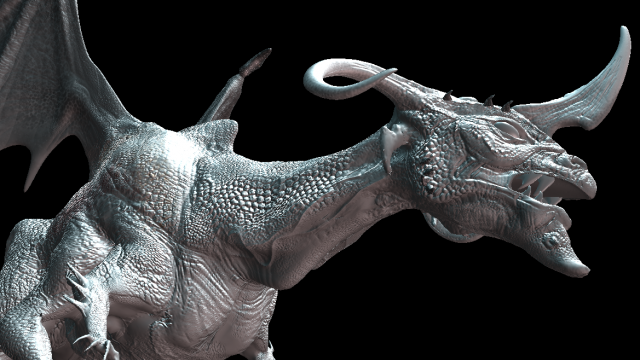3D printing is a trendy technology. It is becoming more and more accessible every day, but what do we really know about it? Is it a useful tool? and, in that case, easy enough to use it ourselves?
What is 3D printing?
3D printing is a process of making a three-dimensional solid object of virtually any shape from a digital model, using various procedures. 3D printing is achieved using an additive process, where successive layers of material are laid down in different shapes.
The first 3D printer design was created in 1984 by Chuck Hull of 3D Systems Corp (picture below). But evolution and accessibility of this technology has been very gradual until recently due inter alia to the exclusivity of patents.
In our article “Methods of 3D printing” you can find explanations of current types of printing and their differences. But let’s leave the definitions and technological models aside and focus on more practical aspects,
what can I do with a 3D printer?
In theory, anything. In practice, the printer model will define the results. Each technology has certain limitations regarding permitted materials and definition.
The most affordable and accessible models do not provide a very high definition yet, so the profile of the layers of material is visible. We also have to take into account the working area of each printer, which limits the size of the piece in length, width and height.
Another aspect we must consider is the number of colors that can be printed simultaneously. Since it will determine the number of colors in the final piece. It is still possible to print the piece in separate parts, changing the color at some point, but only if the color change occurs at a given layer.
The quality of Photopolymerization techniques is very high ( such as stereolithography , SLA ), but we must keep in mind that pieces made with this technique tend to deteriorate over time as they are sensitive to exposure to light. So they are ideal for creation of molds for prototyping, but not as well suited for durable products.
What skills do I need to handle a 3d printer?
Managing a 3D printer requires minimal technical knowledge, which vary depending on the printer model and although, it is not complex, it is neither as simple as its name may suggest. However, the main obstacle is usually the creation of the digital file for printing. Creating the design from scratch requires some knowledge of 3D design software (Blender, which is free, Solidworks, Rhinoceros 3D…).
Another option, although this one requires spending some extra money, is contacting a professional of 3D modeling to obtain the desired design. With the rise of 3D printers, there are many companies that provide these services in addition to printing.

Model Prusa i3, is another printer designed by Josef Prusa inside the RepRap community and distributed as ‘open source’.
Where can I find technical advice?
It is not hard to find advice on specialized forums, the Reprap community is aimed at promotion and self-replication of 3D printers. Or in other words, dedicated to promote and facilitate the use and access to low cost 3D printers. In these communities you can find all kinds of technical advice to learn how to ride and handle our own 3D printer.
Is it, therefore, 3D printing a useful tool?
This, of course, depends on the planned usage. Technically it is a prototyping tool of great power. It is also an appropriate manufacturing technique for small editions or when a lot of customization is required. Applications slowly spread to all fields of science, being medicine one of the fields with most striking achievements .
More info about this case here:




